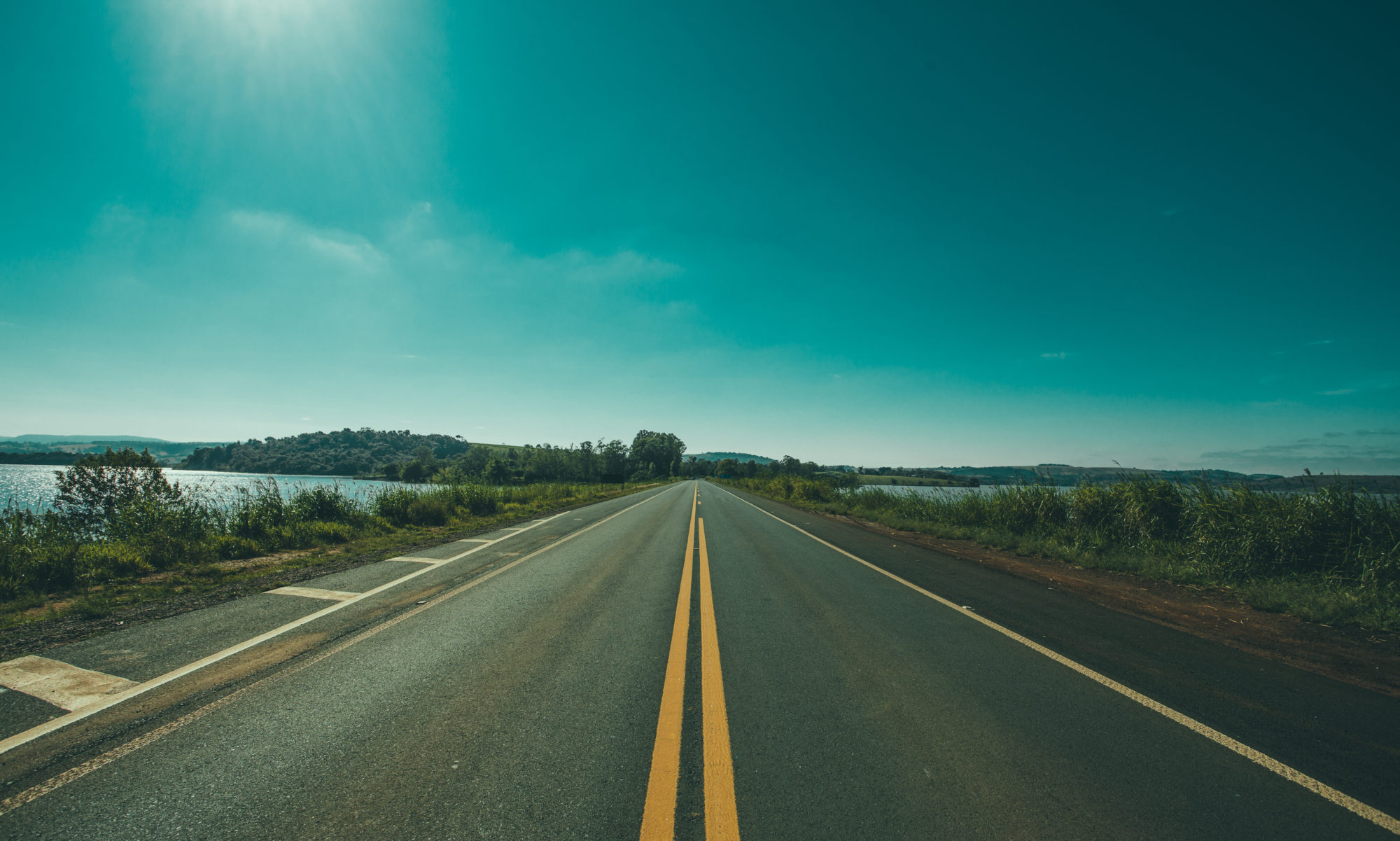Lake Titicaca is the ‘highest navigable lake in the world’, according to some. (Have we mentioned our wry distrust of superlatives?) It’s shared between Bolivia and Peru.
We take a bus from La Paz to the Bolivian lakeside port of Copacabana.
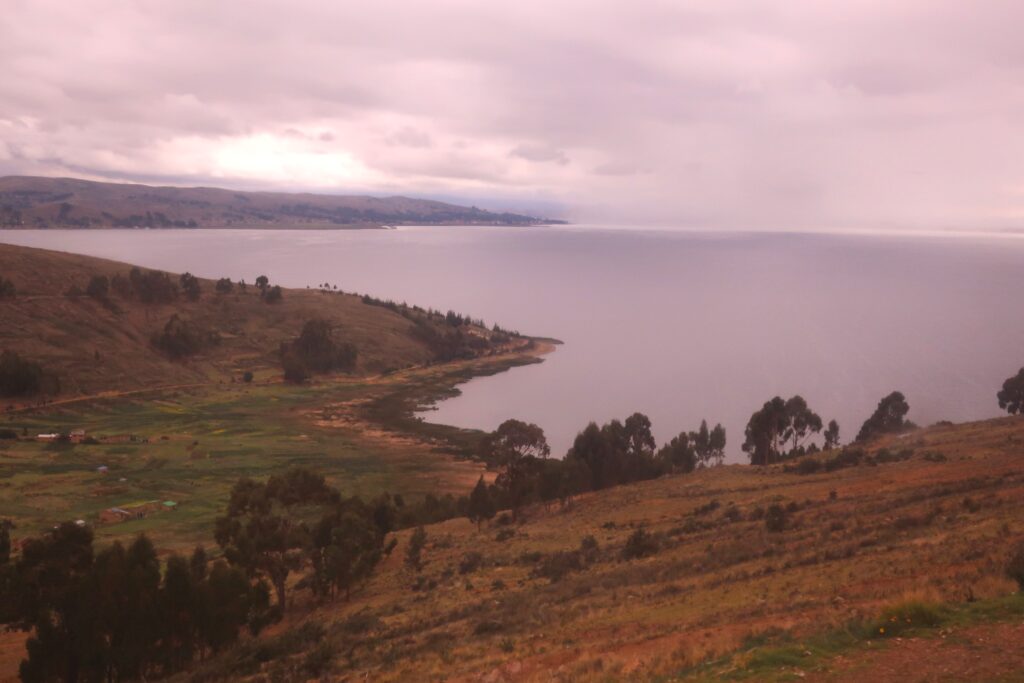
At San Pedro de Tiquina, we disembark while our bus is ferried across a channel on the way to Copacabana.
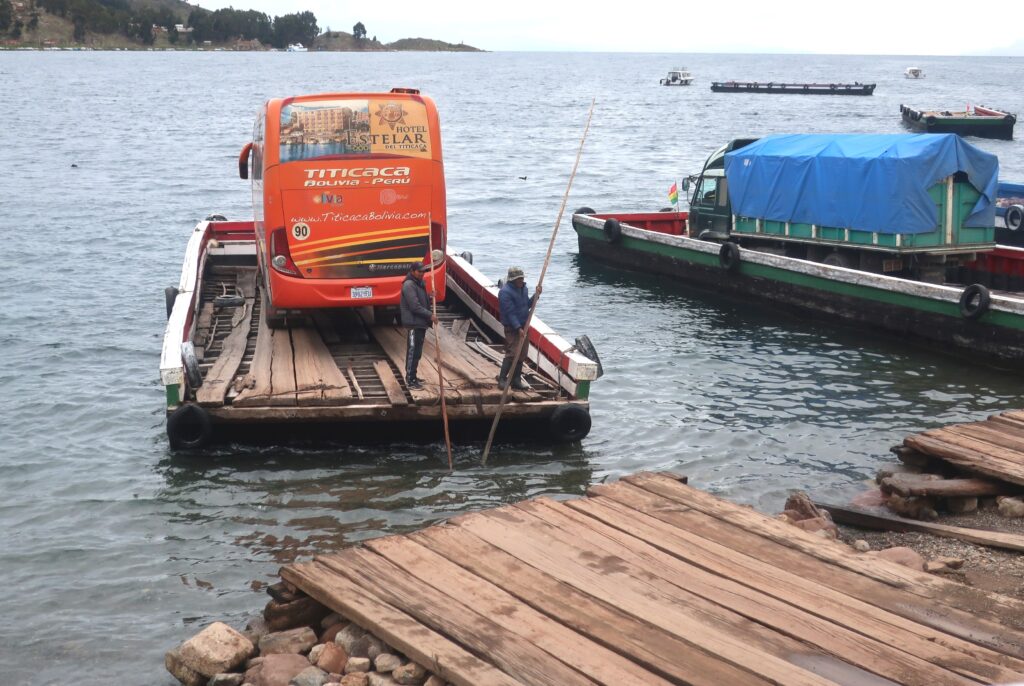
We eventually arrive in Copacabana. What is the connection between this Copacabana and the more glamorous beach in Rio de Janeiro?
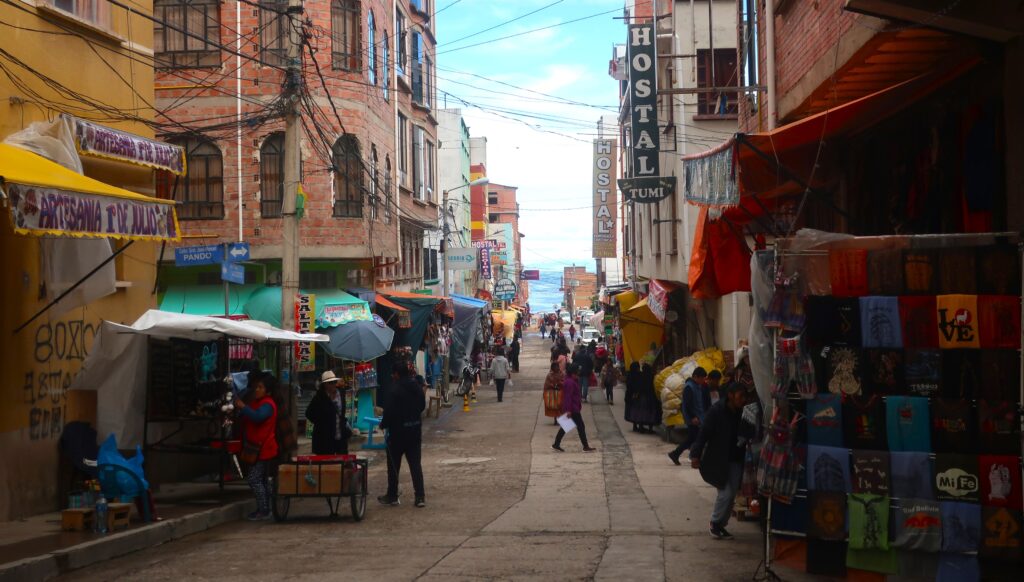
I’m glad you asked. After a bit of research, it turns out that this is the original Copacabana, involving statues of the Virgin rather than beachgoers in skimpy clothing. Huh. You learn something every day.
This is the Basilica of Our Lady of Copacabana, where the good lady resides.
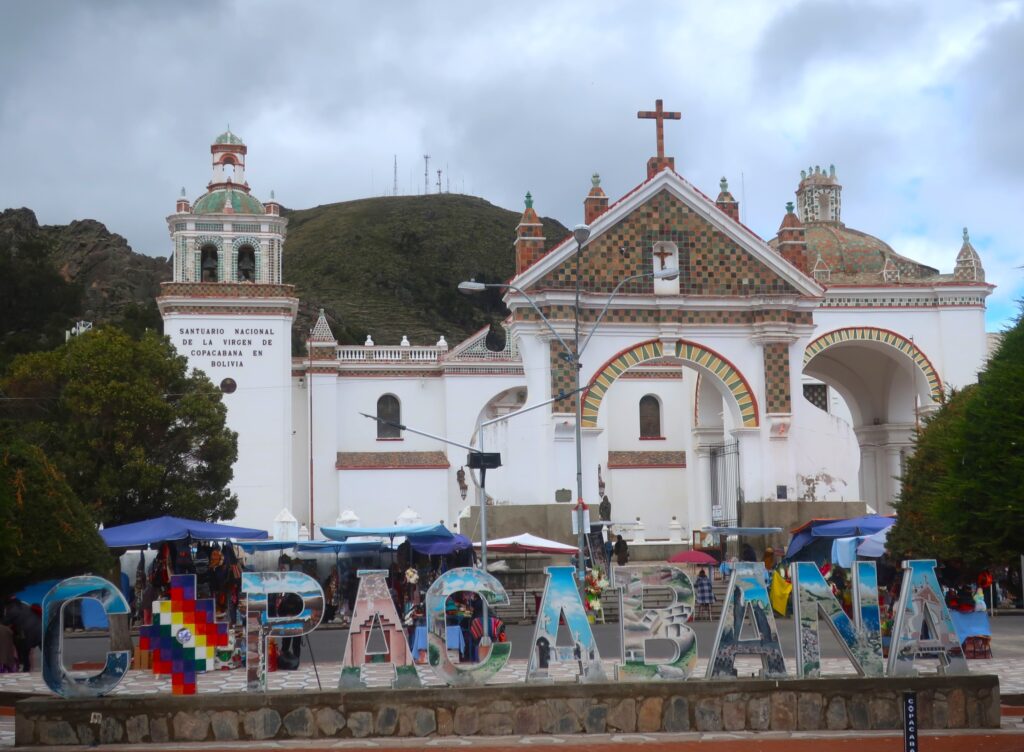
Stalls outside the church sell items asking Our Lady for relief from many ailments.
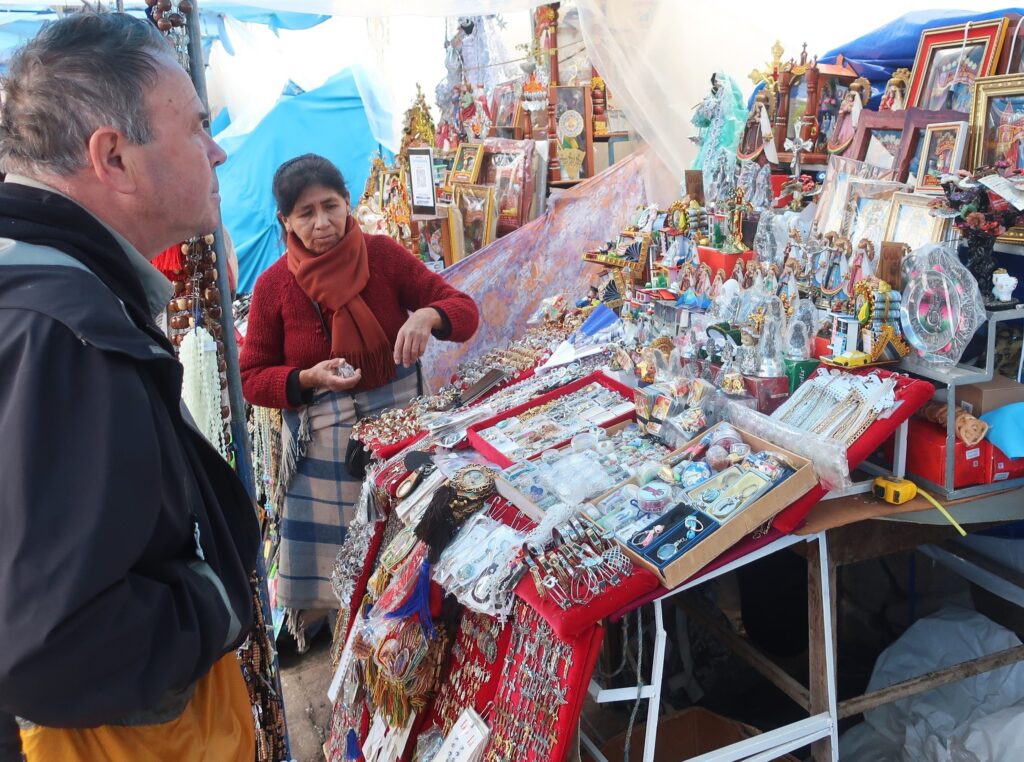
We take a two-hour boat ride to the Isla del Sol.
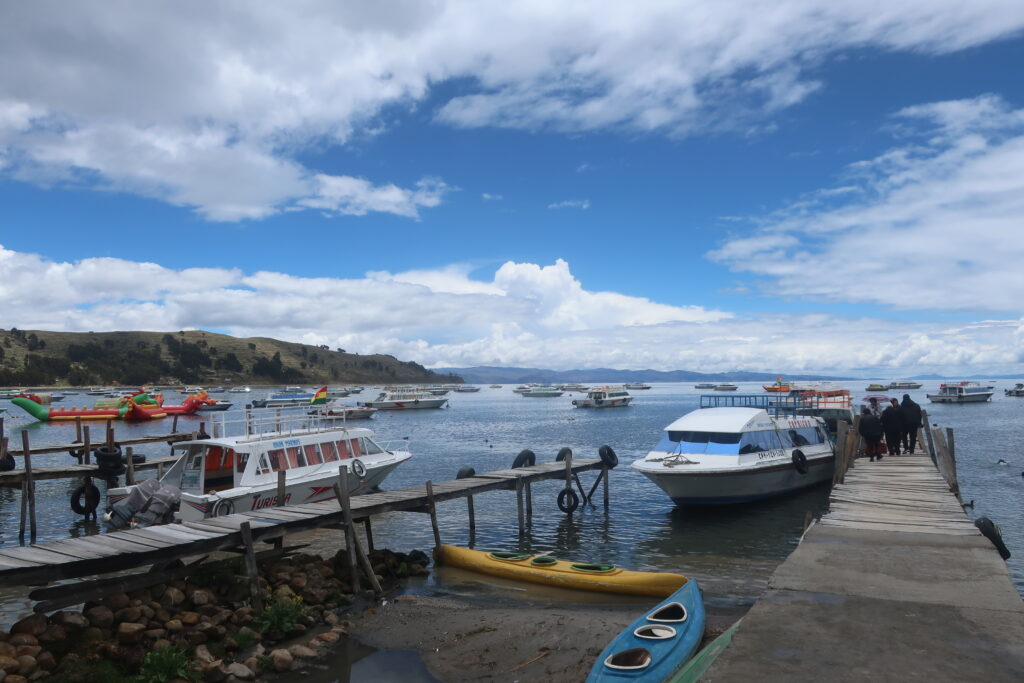
At the landing point on the island are some Inca ruins.
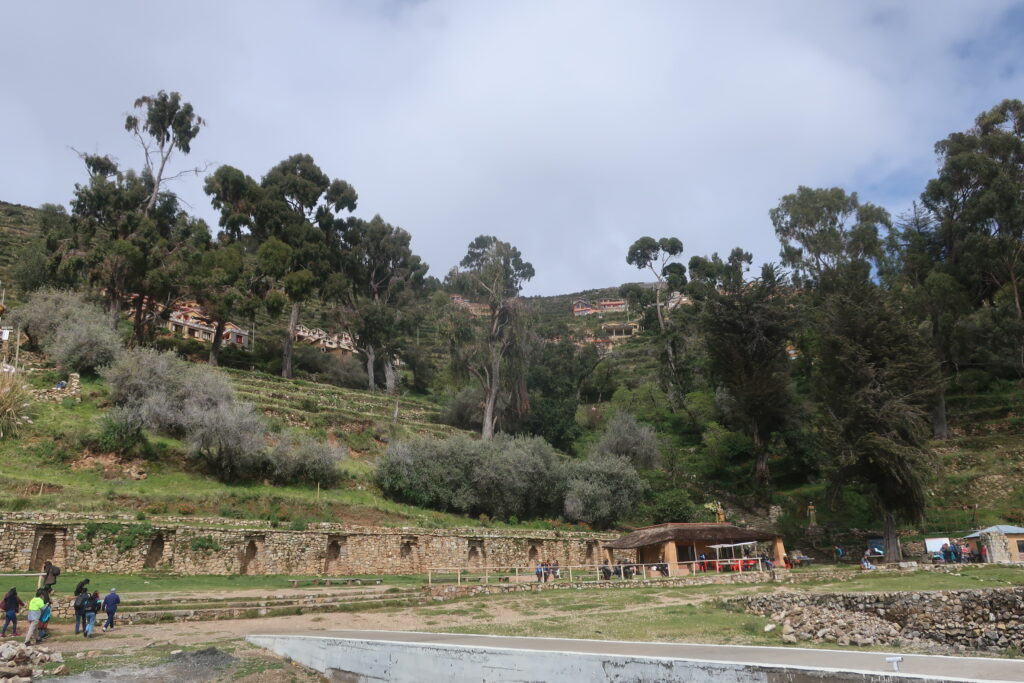
As soon as you step off the boat, you’re faced with a daunting climb up a seemingly never-ending set of steps. It’s been like this since we entered the Andean zone: puffing away like geriatrics, shuffling slowly uphill while trying to breathe the thinnest of air. (Isla del Sol sits at 3976 metres above sea level.)
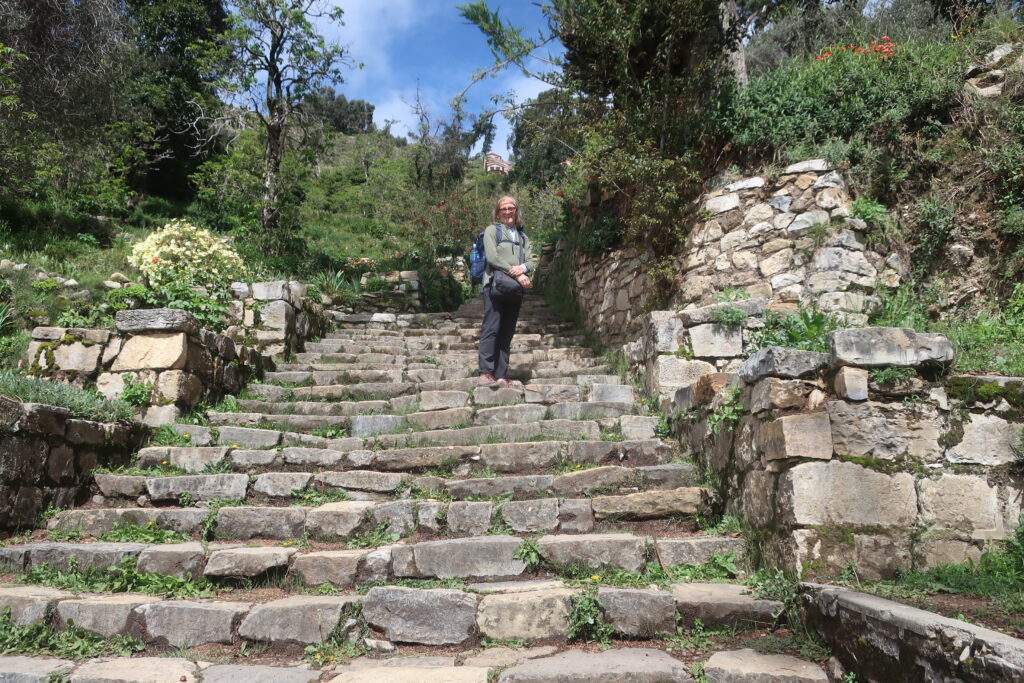
Once you’re on top, you get good views of the lake.
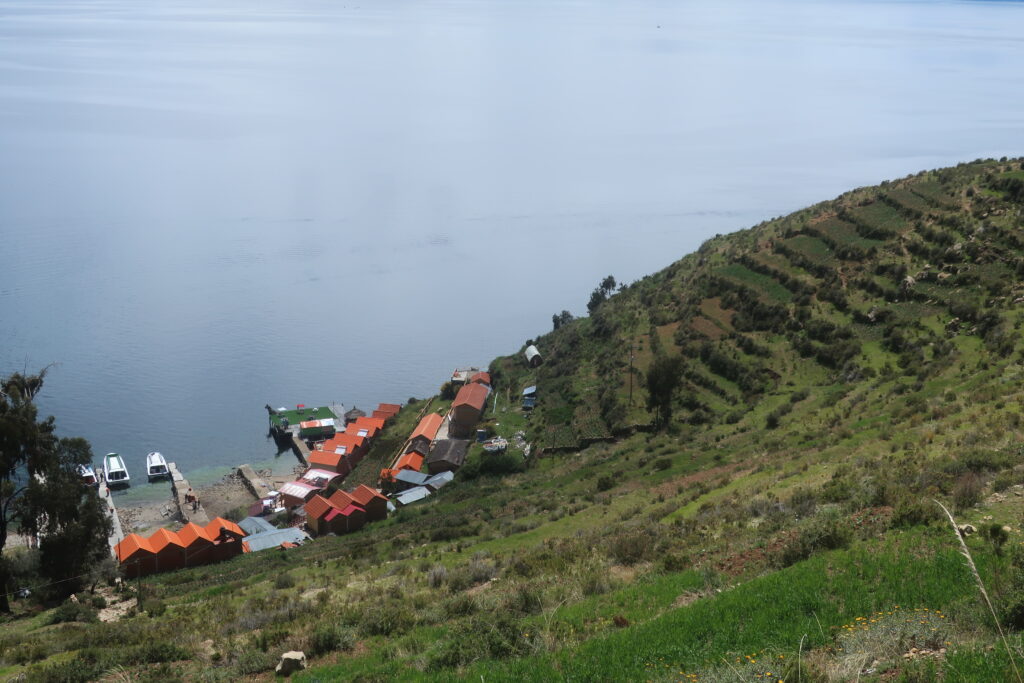
This is Teodora, the host of our homestay.
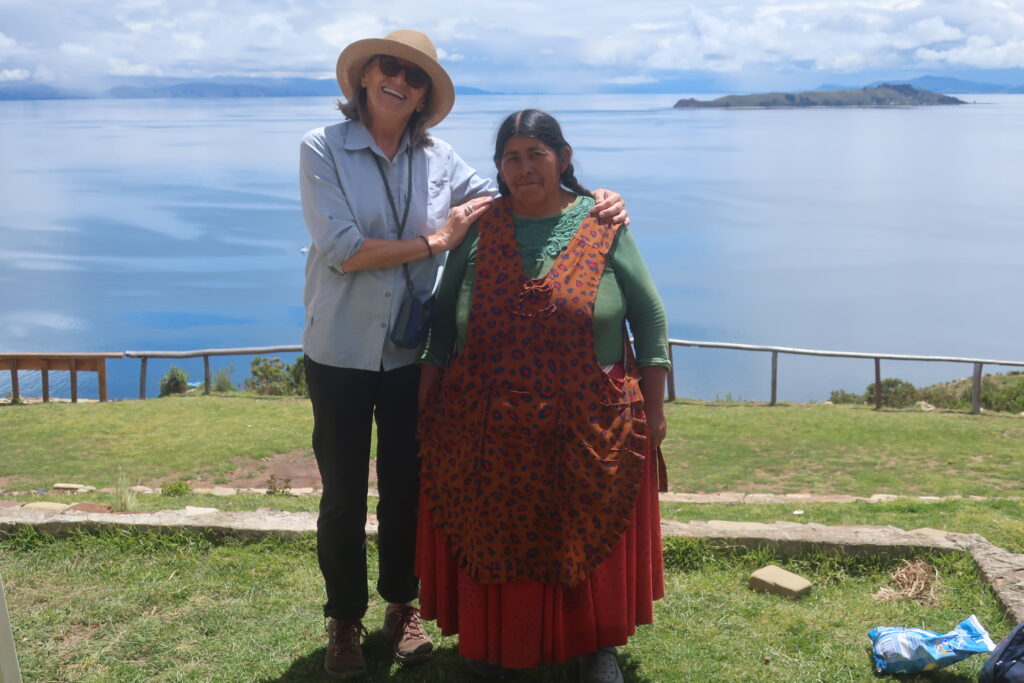
I try to make friends with the local animals.
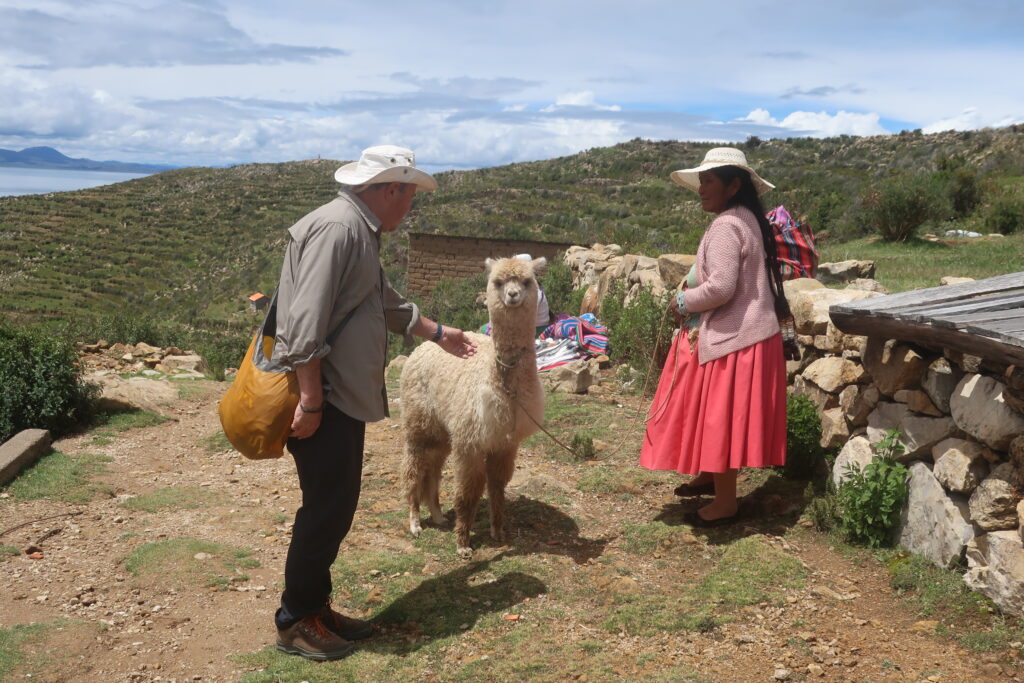
We walk to the Temple of the Sun, also known as Pilkokaina.
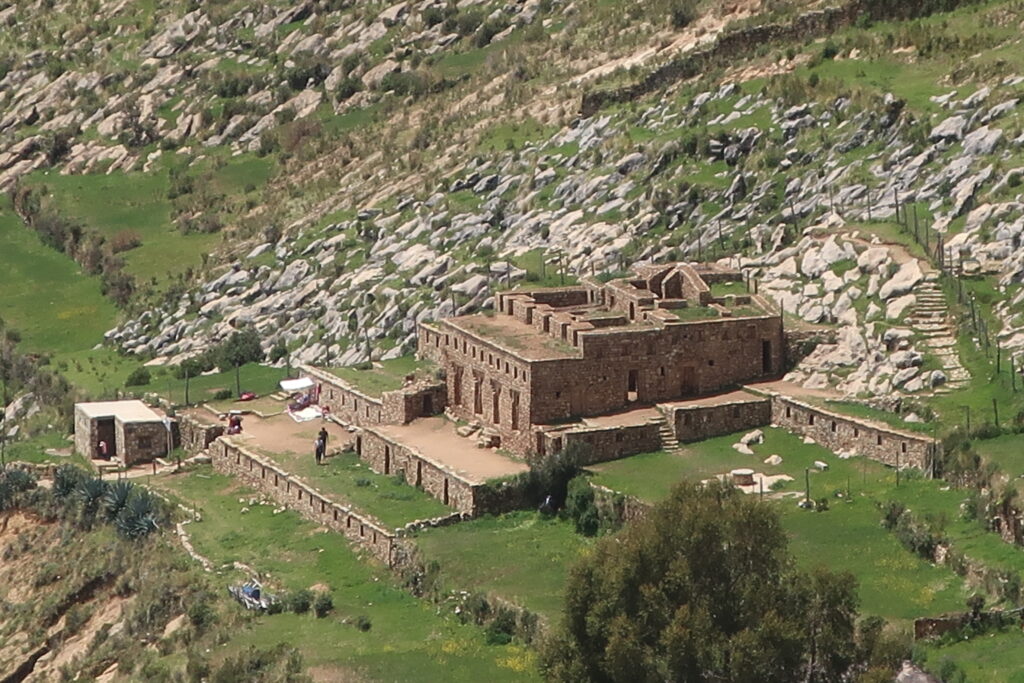
As usual, the learned guesses about the history and usage of this place are just that; guesses.
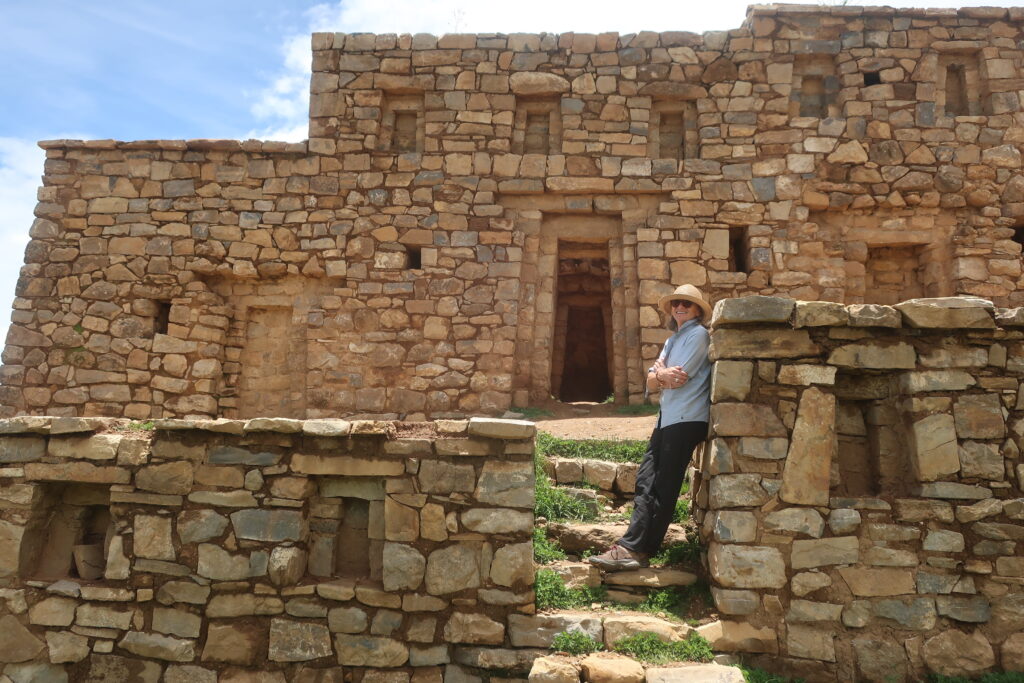
We see the boat we came in on heading back towards Copacabana.
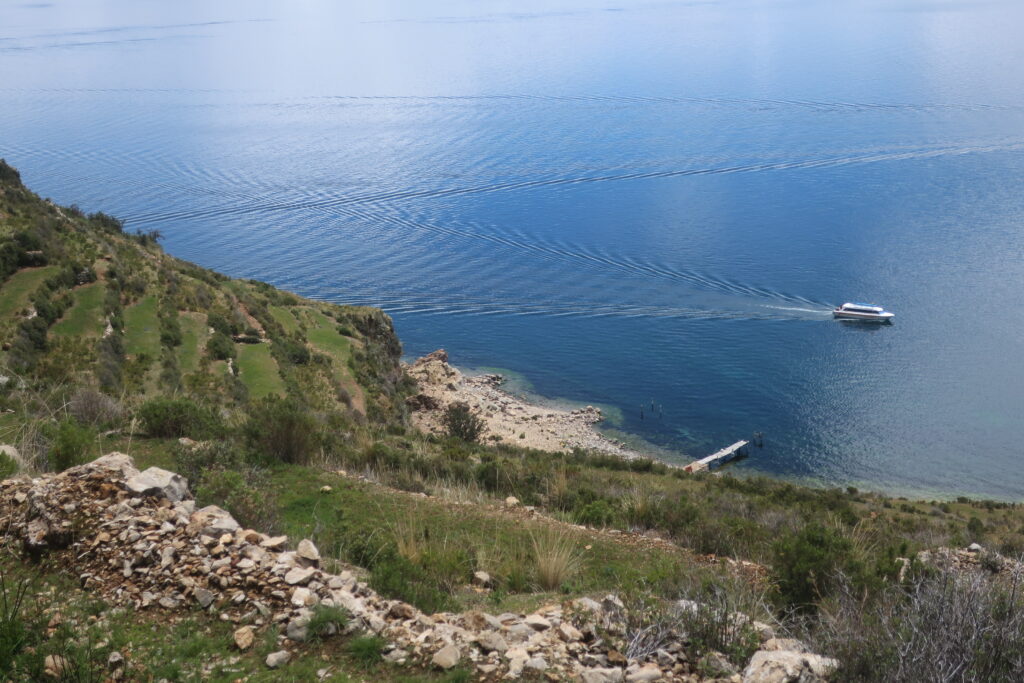
When we return to town, we board a bus for Puno, in Peru.
Puno is a small city with a pleasant colonial plaza and surrounding streets.
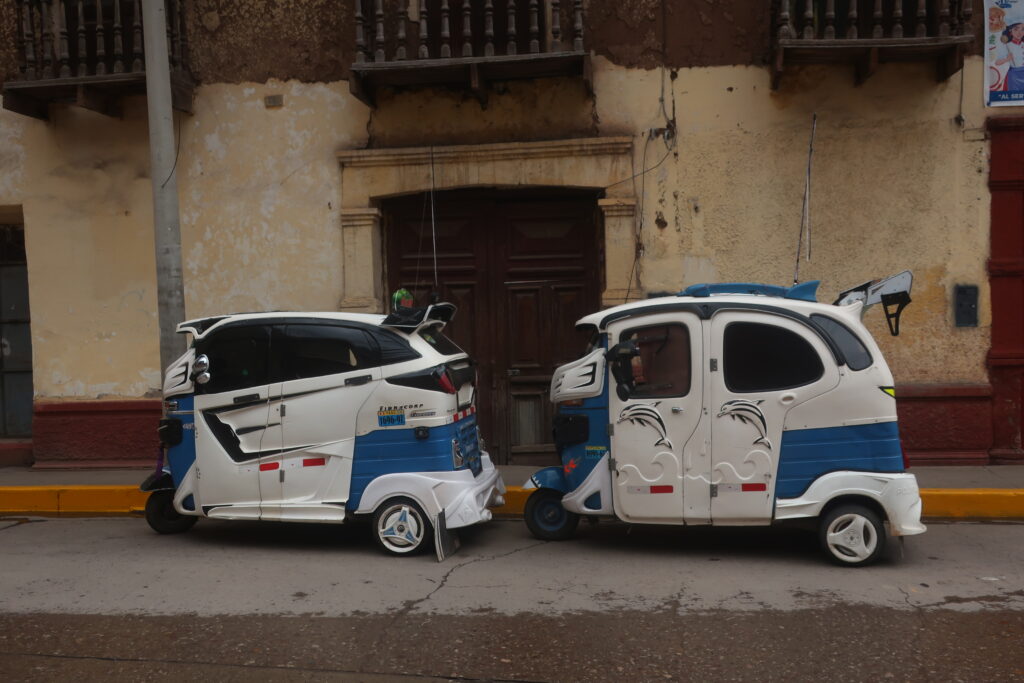
Everyone in town is preparing for the Candelaria, which is apparently big thing in Puno.
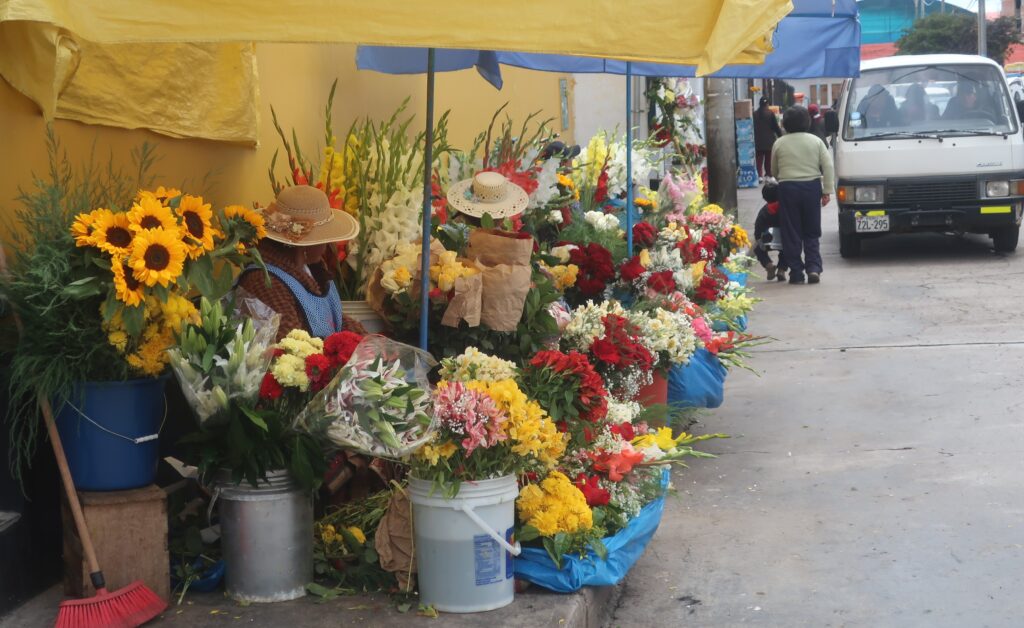
Our plan is to visit the island of Taquile. Maria came here with her sister Lucia 40 years ago, when they were young and adventurous. (They still are, in many ways.) It was pretty rugged then, and is still relatively unvisited.
On the way, we stop off at the Uros Islands. These don’t strike us as some kind of cultural achievement.

We just find the floating island life to be poor and squalid. It doesn’t look like a good life, even from their viewpoint. We can’t wait to leave.
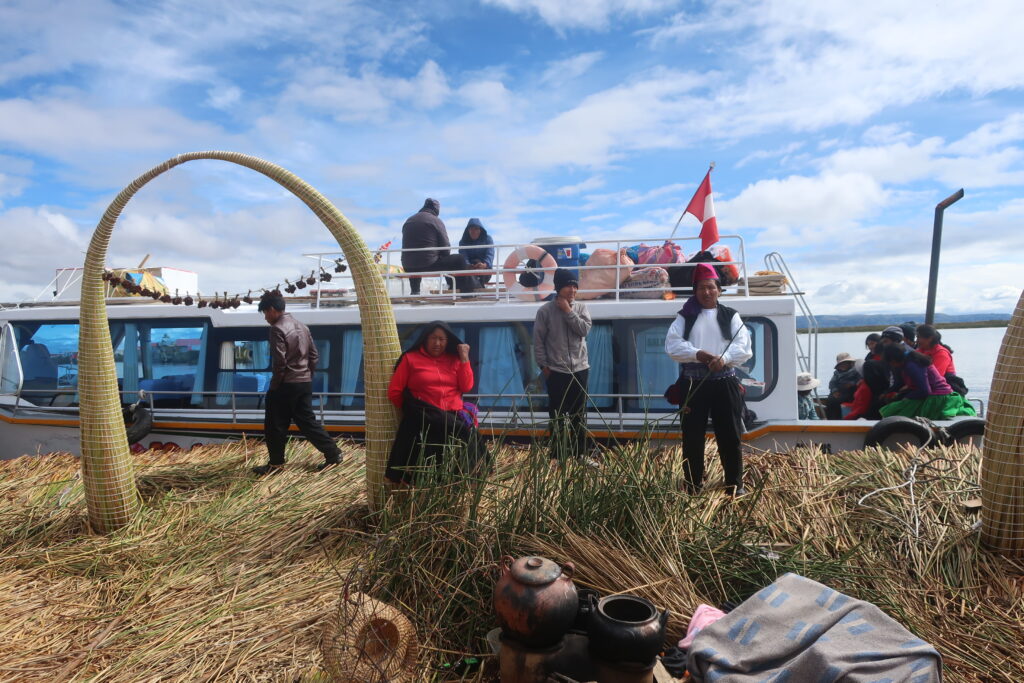
The most interesting thing: a floating general store arrives, and the locals line up to make their purchases.
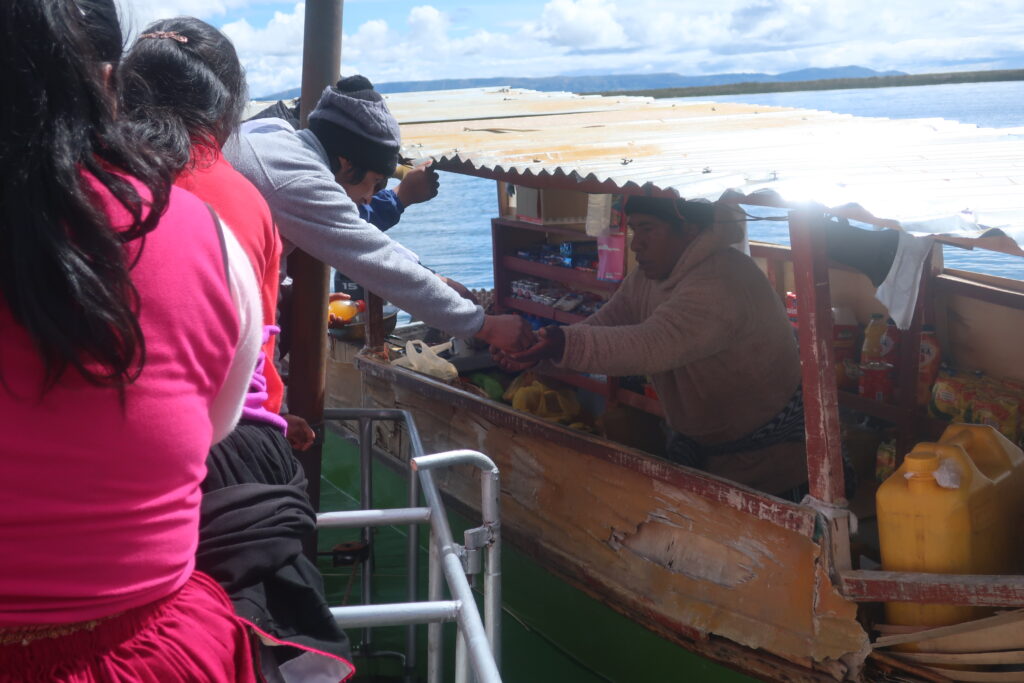
After climbing yet another Hellishly steep set of steps, we are met by our homestay hostess, Dinah, who spins wool while walking and talking to us. Taquilenos are famous for their skill in textiles, and have some kind of UNESCO cultural certification to prove it.
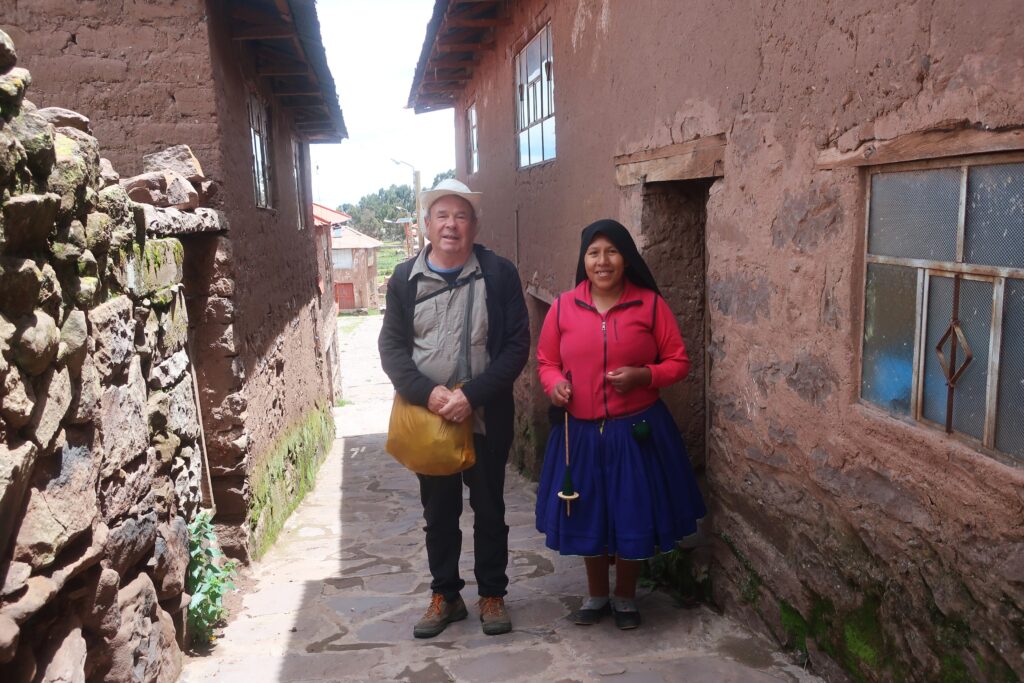
We succumb to the magnetic pull of the local craft market.
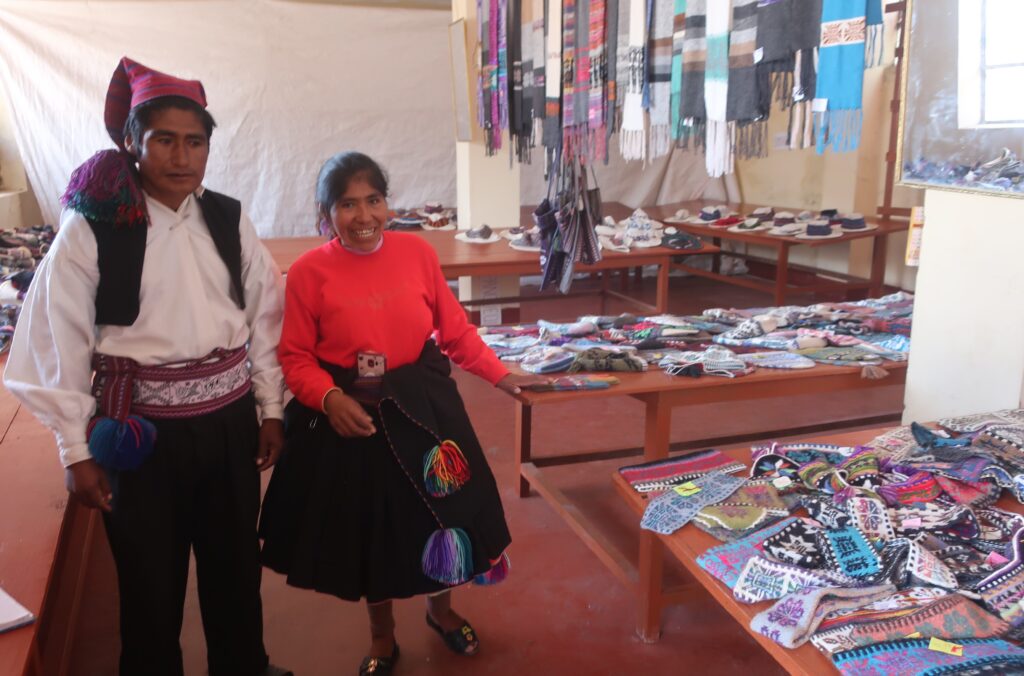
People here speak Quechuan – the language of the Incas – and Spanish.
There are no cars on the island. Picturesque adobe houses line the pedestrian alleys.
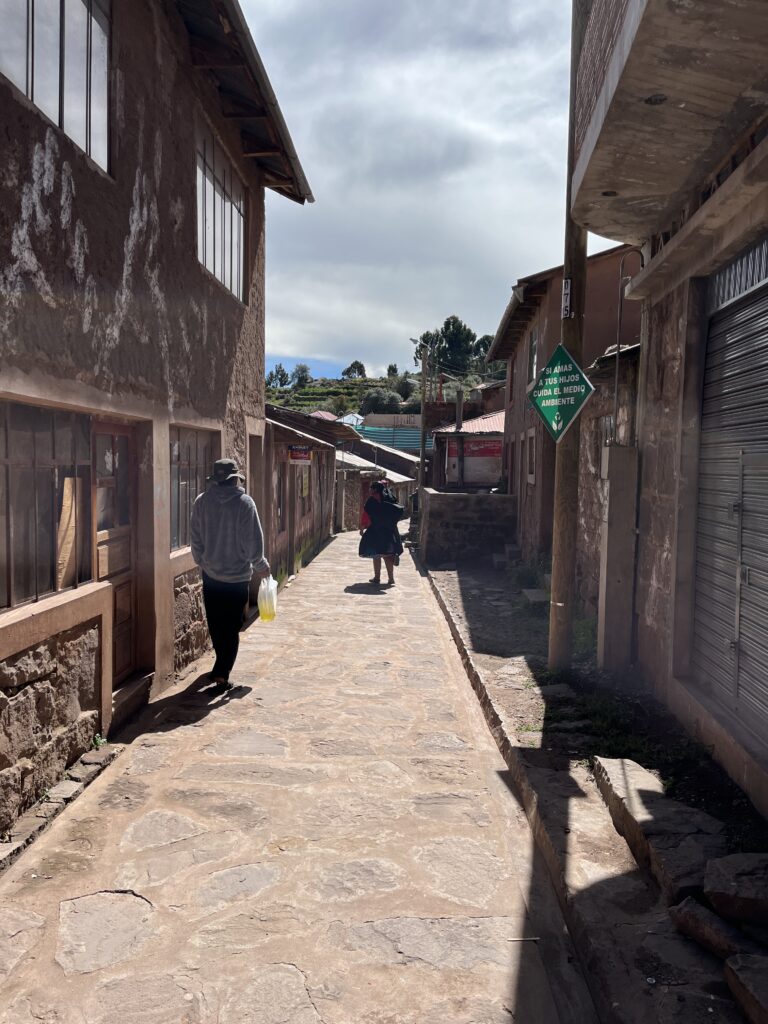
The main square is the red-hot centre of the village.
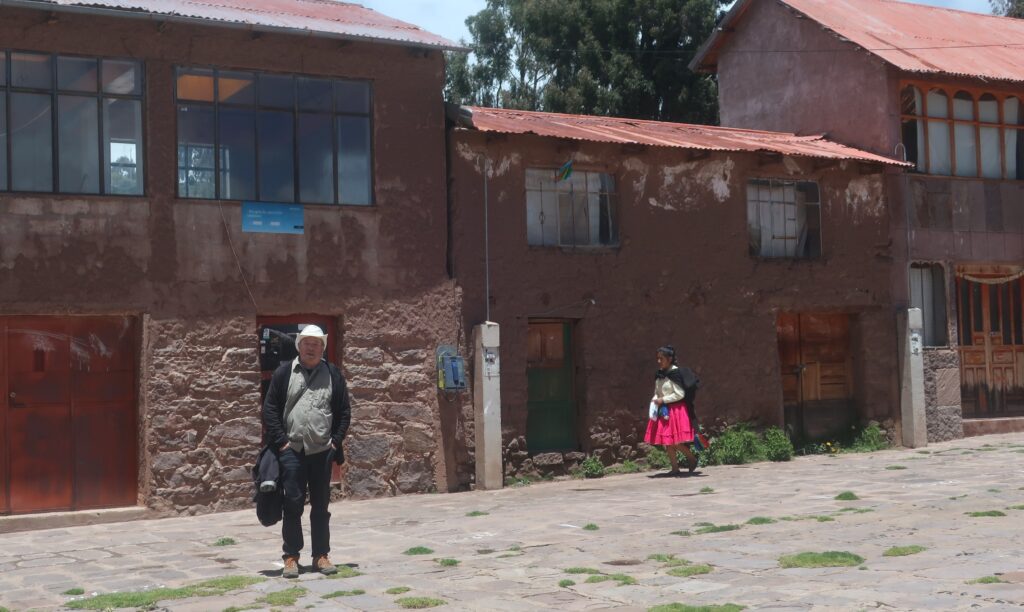
There are Inca ruins at the highest point of the island. Of course, we have to go. So we plod ever higher until the trail runs out, wheezing and panting.
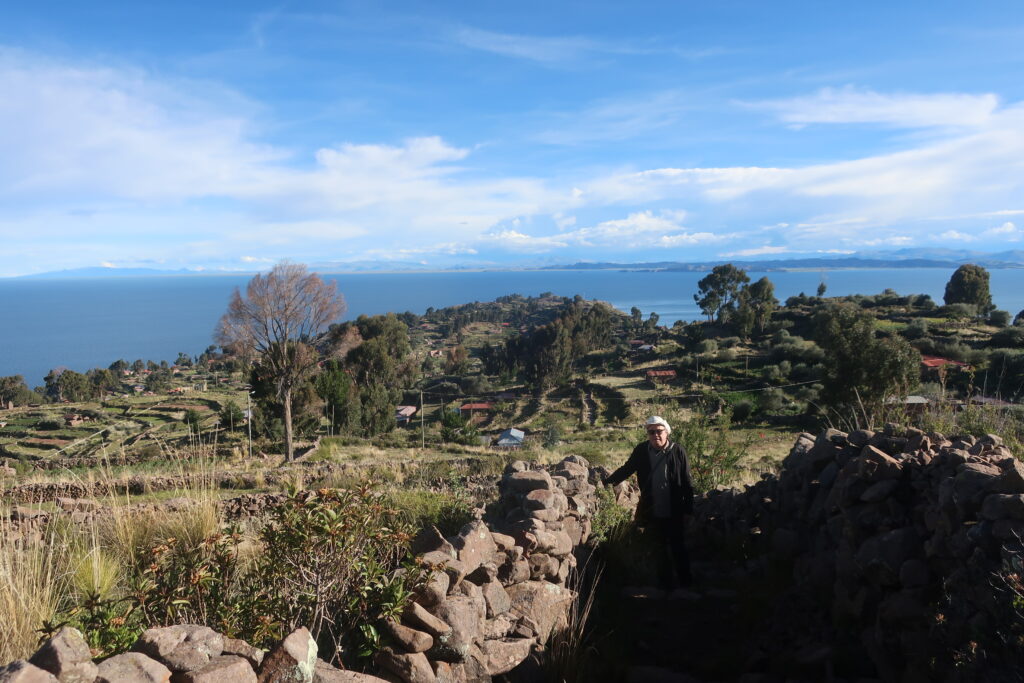
As usual, we’re rewarded with a spectacular view.
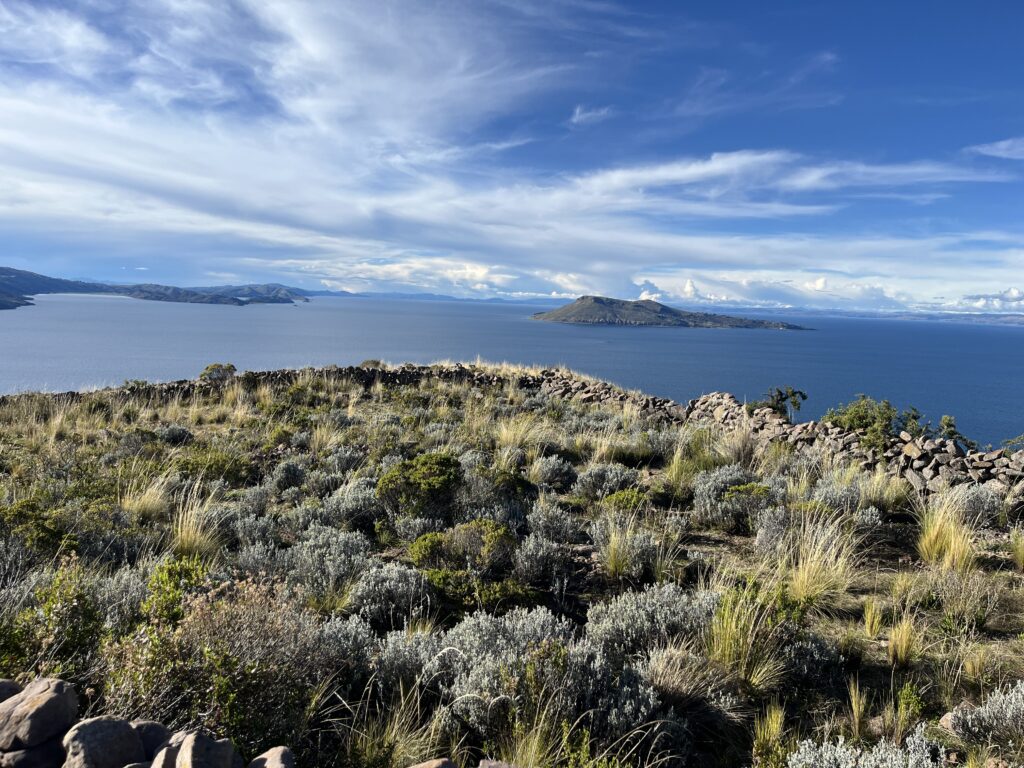
Plus, we get to take a long break.
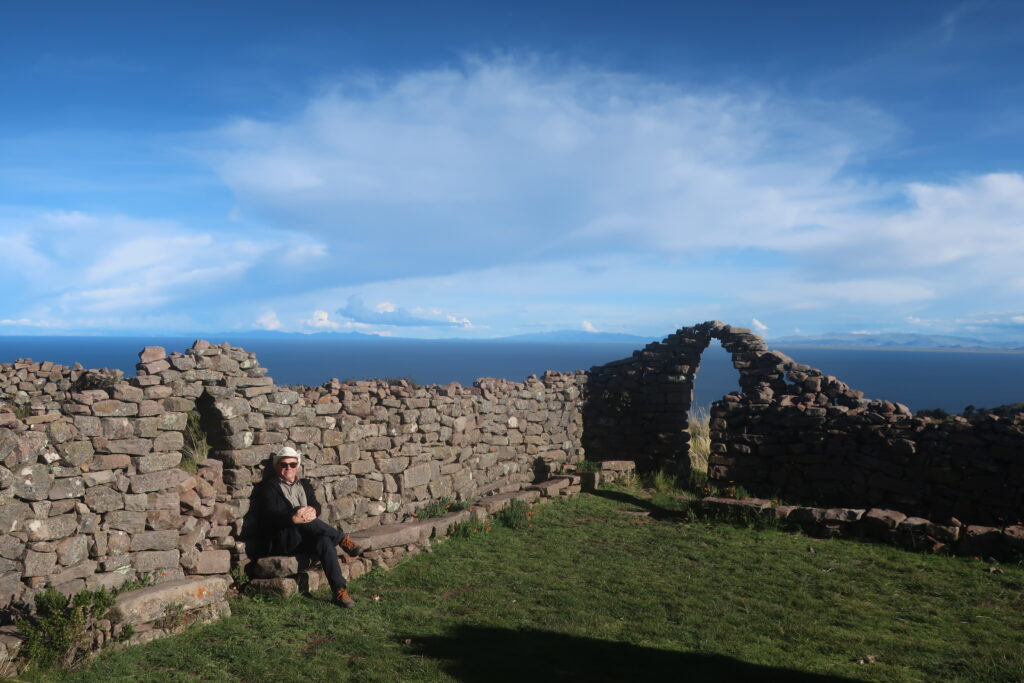
On our final day, we find the beach. It looks like a fine beach, and Maria is eager to take a dip in Lake Titicaca, but we have to make it back to the other side of the island for the boat back to Puno.
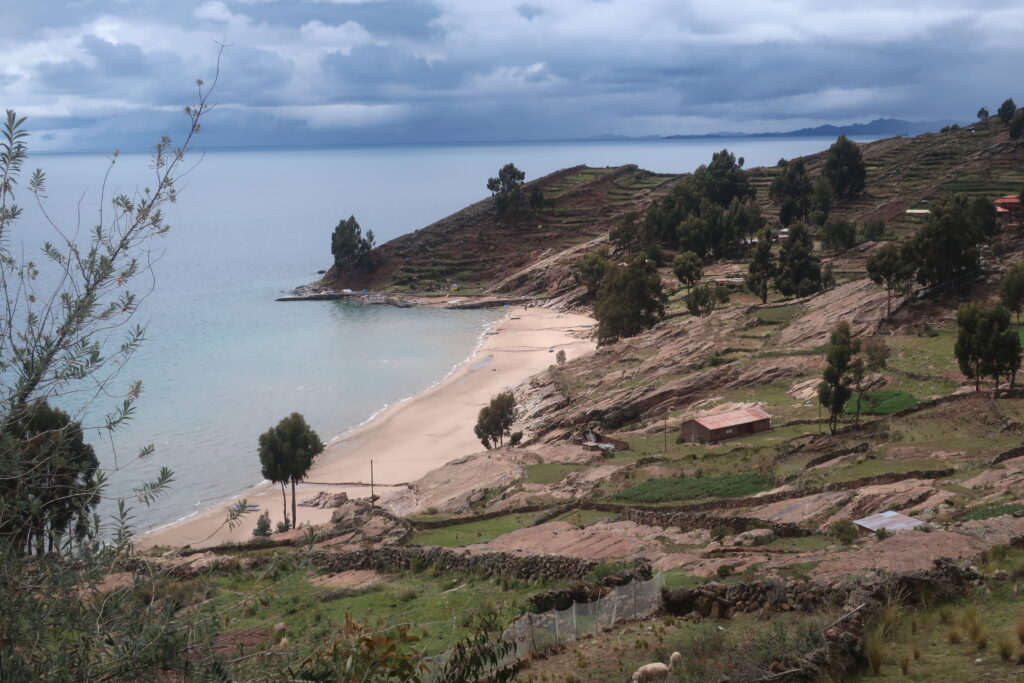
The departing boats leave from a different location than the arriving boats.
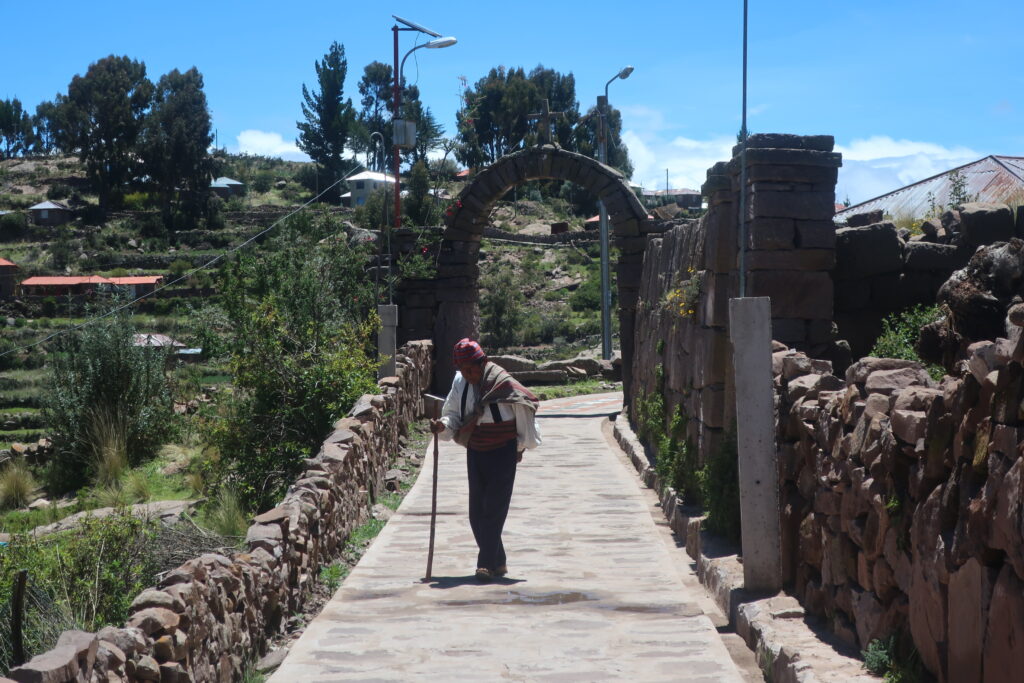
Finally, the route to the departure dock is all downhill.
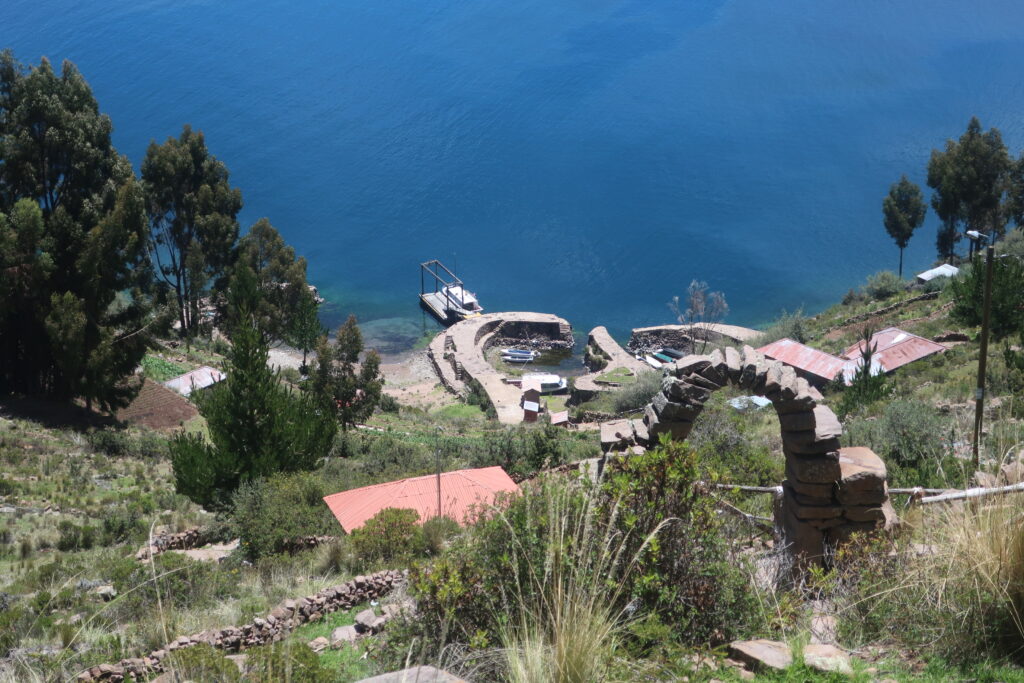
To ensure we don’t get lost, we are accompanied by our ten-year-old guide, Elisabet (Dinah’s daughter).
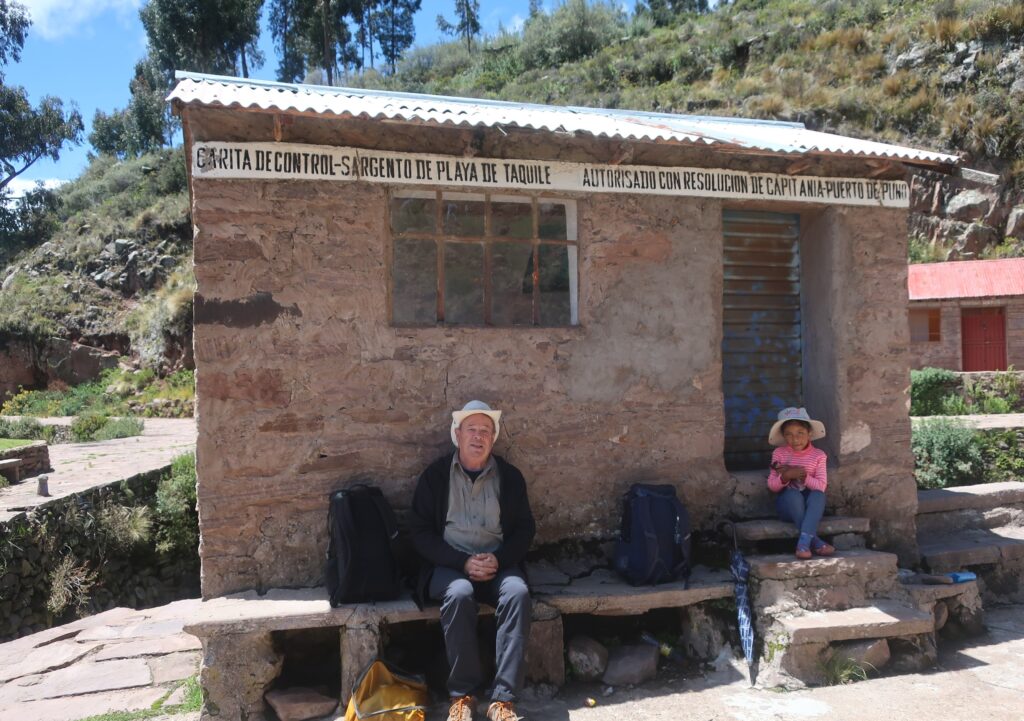
Sight or Insight of the Day
While departing from and arriving to the docks at Puno, we notice a large ship berthed nearby.
This is, like, an ocean-going vessel. We wonder how it got here, since there are no ship-building establishments on the lake. We can make out her name, ‘Ollanta’.
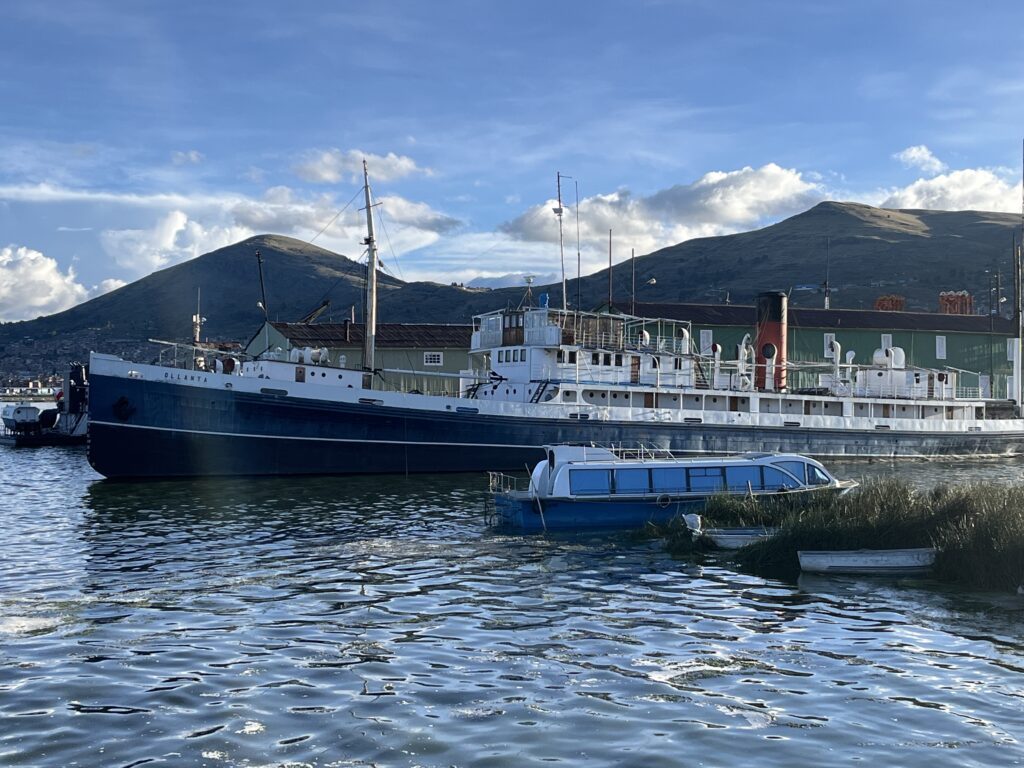
It turns out she was made in England – Hull, to be exact – in 1931. According to Wikipedia:
“…they assembled her in their shipyard with bolts and nuts, marked each part with a number, and then disassembled her into many hundreds of pieces and sent her to Peru in kit form.”
The pieces were brought to the lake by rail and re-assembled. She appears to be in pretty good shape for a ship that’s nearly a century old.
